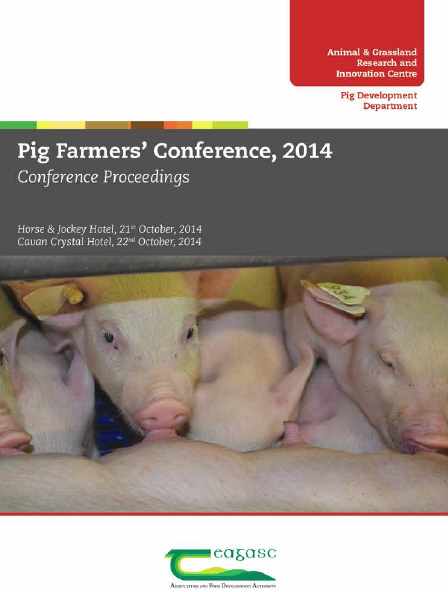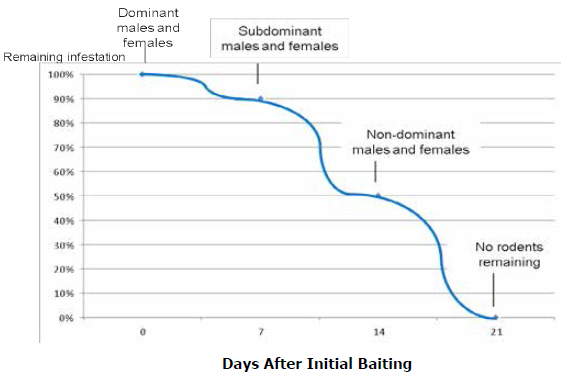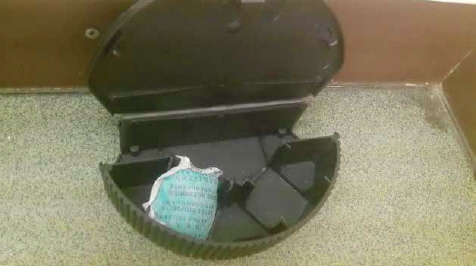



Rodent Control on Farms
At the 2014 Pig Farmers' Conference in Ireland, Michael McKeon of Teagasc shared his knowledge of rodent behaviour to achieve effective rodent control.
Rodent control is unfortunately a necessity in the pig industry due to the abundance of feed material used. In Ireland, the two principle rodents of concern are Rattus norvegicus (brown rat) and Mus domesticus (house mouse). While all pig units implement rodent control measures their effectiveness varies considerably from unit to unit. This paper aims to outline some of the key issues concerning this area.
Why Is Rodent Control Necessary?
If rodents (rats and mice) are not controlled then they may inflict considerable damage on a pig units’ productivity and efficiency. Meehan (1984) estimated that the annual cost from rodent damage in the UK exceeded £50 million and they were responsible for causing 20 per cent of all fires due to electrical faults.
In addition to inflicting structural damage (electrical, insulation), they also cause considerable food wastage due to spoilage. It is estimated that the volume of food spoilage in Asia would feed 200 million people annually. Malaysia estimated that the annual loss to their palm oil production exceeded US$88 million.
From a pig producer's viewpoint, the structural damage and food spoilage is further exacerbated by the risk of disease spread. An infestation of 100 rats will produce one tonne of droppings and 500 litres of urine, which will cause feed spoilage but may also transmit disease.
The table below shows the relevant pig diseases that are spread by rodents. While some of these have minor financial implications, others such as Salmonella or leptospirosis may be more costly. Hungry rats have been observed to travel 2km at night which further increases the disease risk between pig units in areas of high pig density.
| Table 1. Pig diseases spread by rodents | ||
| Disease | Agent | Host / carrier |
|---|---|---|
| Bordetellosis | Bacteria | Rats |
| Encephalomyocarditis | Virus | Rats & mice |
| Leptospirosis | Bacteria | Rats & mice |
| Aujeszky's disease | Virus | Rats |
| Salmonellosis | Bacteria | Rats |
| Swine erysipelas | Bacteria | Rats |
| Toxoplasmosis | Protozoan | Various rodents |
| Trichinosis | Nematode | Rats |
Behaviour and Control
In order to install an effective control programme, it is important to first understand the behaviour and traits of rats and mice. The two are very different and therefore will be described separately.
Rats
Rats have very poor eyesight, are colour-blind and have only an ability to distinguish rough outlines though a ‘haze’. They make up for these difficulties by utilising their whiskers, flank hairs and a strong sense of smell. As a result, they stay close to walls when moving and avoid open spaces. They also utilise kinesthesis (muscle memory) to follow similar movement patterns. These traits result in rats been ‘creatures of habit’ that do not like change. This can be observed by the entry and exit trails that rats make over a period of time. This indicates that rat bait points/traps should be placed along trails or along the edge of building.
Mice
Mice also have poor eyesight and unable to distinguish the colour red. They can only focus on an item within 0.5 metres but the location of their eyes on the side of their head allow them to track surrounding movement up to 12 metres away. Unlike rats, mice are inquisitive but cautious. They never travel the same route twice, varying their movements to minimise the risk. This results in them using a zig-zag movement across rooms rather than along the boundary wall. Likewise, they do not eat all their feed at a single point, instead preferring to sample from a number of different feeding points to reduce the risk of poisoning. This often results in mice spoiling more foodstuffs than rats. The ideal location for mice bait points is along internal divisions in pig houses rather than along the exterior.
Type of Bait
The type of bait commonly in use in Ireland has an anti-coagulant as its active ingredient. Originally, first-generation anti-coagulants like warfarin or difenacoum were used but these required multiple feeds over a number of days for a lethal dose. More effective second-generation anti-coagulants have now been developed which require much lower intakes to constitute a lethal dose – see Table 2. A single feed can now be lethal for rats (2g) and mice (1g) although they may continue to feed for a few days after the initial lethal dose.
| Table 2. Effectiveness of active ingredients | |||||||
| 1st generation | 2nd generation | ||||||
|---|---|---|---|---|---|---|---|
| Species | Body- wt (g) | Warfarin | Difenacoum | Bromadiolone | Brodifacoum | Flocoumafen | Difethiolone |
| 0.025 | 0.005 | 0.005 | 0.005 | 0.005 | 0.0025 | ||
| Rat | 250 | 5.6 - 58 | 9 | 6.5 - 8.0 | 2.1 | 1.25 - 1.90 | 5.6 - 6.0 |
| Mouse | 25 | 37.4 | 0.4 | 0.9 | 0.2 | 0.3 - 0.6 | 1.4 |
| Pig | 50 | 200 | 80,000 | 3,000 | 500 | 60,000 | 5,000 |
| Dog | 5 | 400 | 1,000 | 1,000 | 25 | 7.5 | 2,360 |
| Cat | 2 | 80 | 4,000 | 1,000 | 1,000 | 400 | 1,280 |
| Chicken | 1 | 4,000 | 1,000 | 1,000 | 90 | 150 | 36 |
Rats and mice generally prefer bait that is moist therefore using wax blocks or a paraffin coating on the bait helps to ensure that it stays fresh and moist for longer. In pig units, it also differentiates the bait from the surrounding dry grain feed sources – some companies now use a fat-based product content rather than grain based for further attractiveness.
Bait Timing
The active rodenticide (poison) ingredient will dictate the timing of the bait allocation. If first-generation anti-coagulants are being used then it will require a number of consecutive feeds for the intake to be high enough to reach a lethal dose. The bait must therefore be continually replenished to ensure that it does not run-out until the population is eliminated. The bait point must be checked at a minimum every three days but if the bait supply is fully eaten during 24 hours then double the supply until intakes reduce.
If second generation anti-coagulants are being used then only a single feed is required to be lethal. This means that the bait should be used on a pulse system and should only require 21 days to eliminate the rodent population (Figure 1).

After 21 days bait intake should have stopped allowing the refilling of the bait points to cease. Bait supply should only recommence if activity is again observed. This results in less bait been required (compared to first-generation anti-coagulants) thereby saving money and reducing the risk of non-target animals being accidentally poisoned, e.g. shrews.
Bait Containers
Bait containers should ensure that the bait cannot be carried away by rats or other non-target animals. It should be clearly identifiable for humans and inaccessible to pigs. The bait box should ideally be composed of materials from the surrounding environment to ensure that the rats and mice can readily identify with it and therefore will freely enter it. Ideally, it should be of sufficient size to accommodate a number of rodents at the same time with a seperate entrance and exit.
The container should be located as near as possible to the rodents shelter/nest. For mice, the bait points should be closer together (3 metres) but rats travel further so may be 15 to 20 metres apart.

Responsible Usage of Anti-Coagulants
Over the last decade a number of studies have highlighted the rodenticide toxicity levels in the owl population in Ireland and the UK. While rodenticides have not been definitively linked to a reduction in the owl population, it is definitely a contributory factor in their decline.
In a recent vote in the European parliament second generation anti-coagulants missed being banned by a very narrow margin. The issue will be revisited in the next few years and the industry and farmers must be able to show that they are using these products in a more sustainable and responsible manner, i.e. the risk of non-target animal poisoning is reduced. If this cannot be clearly demonstrated then there is a high chance that these will be banned next time around which will severely comprise our ability to control rodents.
Reference
McKeon M. 2014. Rodent control. Proceedings of the Teagasc Pig Farmers' Conference 2014. 21 and 22 October 2014. p63-67.
Further Reading
You can view other papers from the 2014 Teagasc Pig Farmers Conference by clicking here.
February 2015








